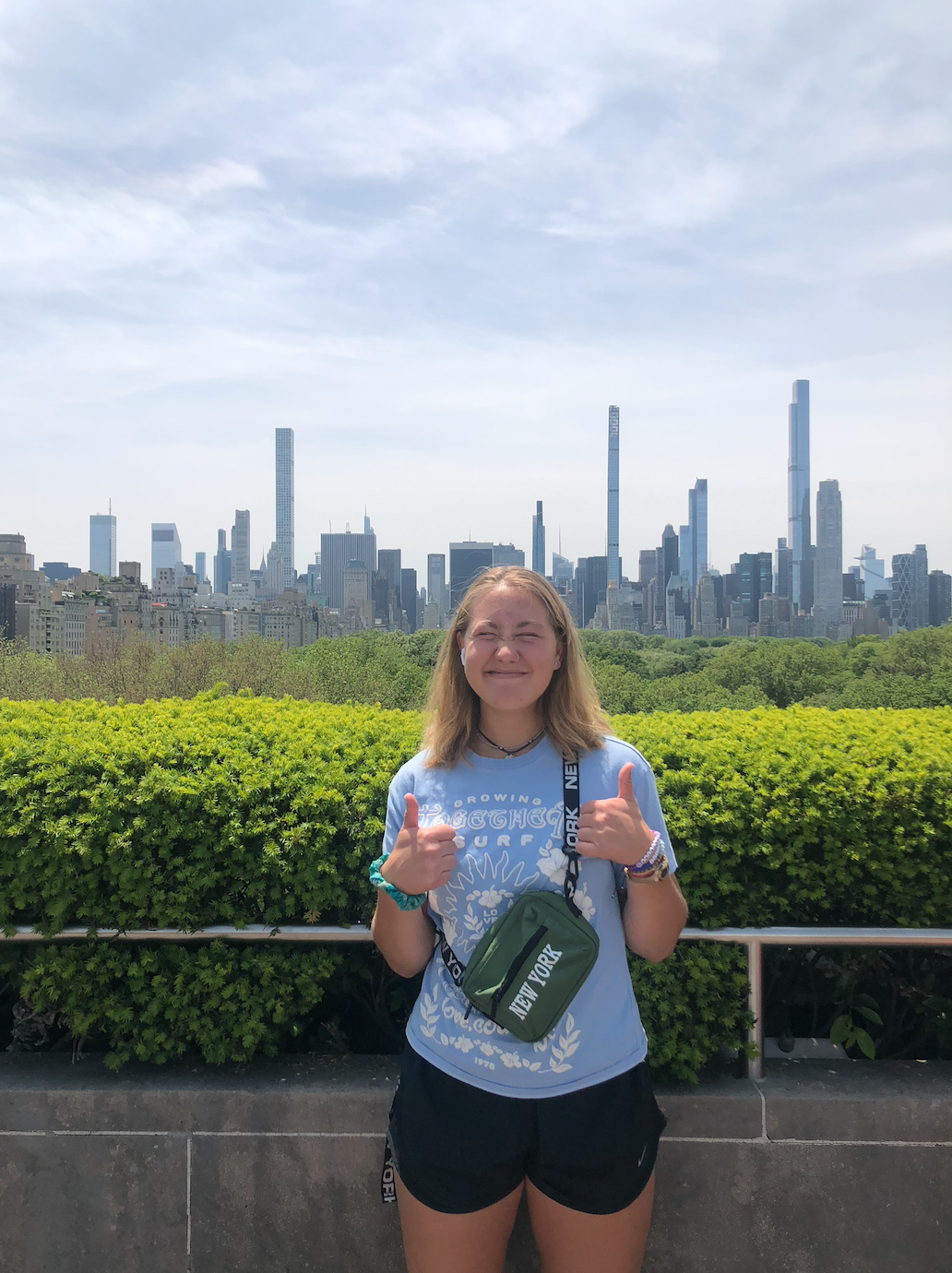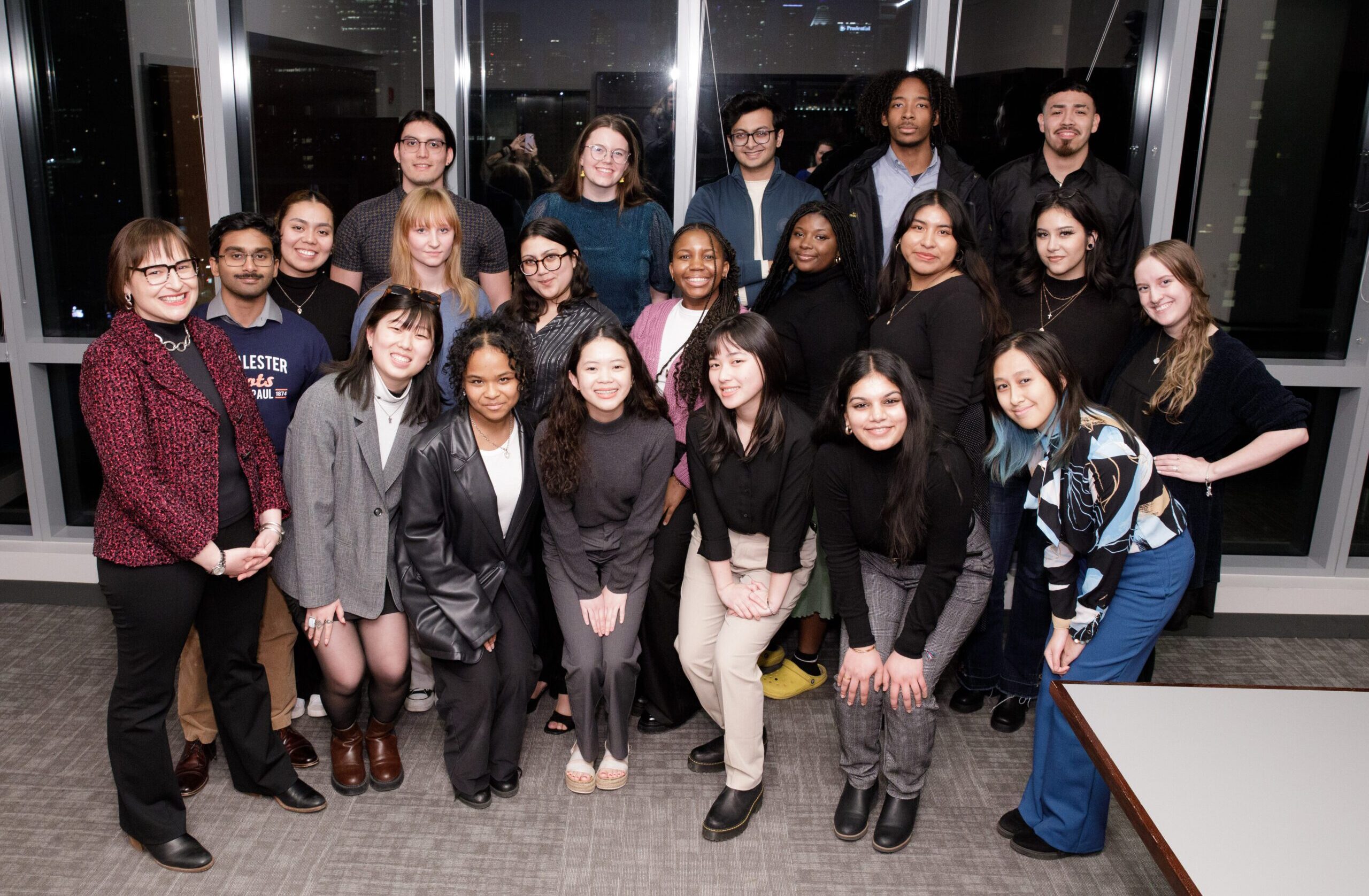The Florence Program will sponsor a public lecture on March 16 by Dr. Julia A. Sienkewicz on “Transatlantic Visions: the Role of Florence in Horatio Greenough and Thomas Cole’s View on American Art.”
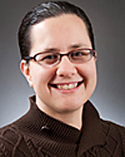 Julia Sienkewicz
Julia Sienkewicz
The lecture will illuminate artistic connections between Florence and the U.S., focusing on a pair of 19th century American artists who were influenced by the time they spent living and working in Florence. “Greenough and Cole were interested in creating a new type of art for the United States,” said Sienkewicz, who is Assistant Professor of Art History at Auburn University Montgomery.
Students on the fall Florence: Arts, Humanities, & Culture program have the rare opportunity to tap into a connection that stretches across the centuries to Greenough when they study figure drawing at the Charles H. Cecil Studios, which will host Sienkewicz’s presentation.
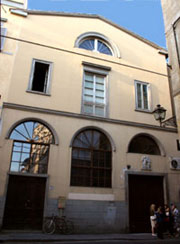 The Charles H. Cecil Studios in Florence.
The Charles H. Cecil Studios in Florence.
The Cecil Studios occupy the most historic Florentine atelier still in active use. The building was a church until it was converted into an art studio complex in the early 1800s by Lorenzo Bartolini, a prominent sculptor of that time.
Beginning in 1828, Greenough studied with Bartolini in that atelier, and ended up living in Florence most of his adult life. When Cole stayed in Florence in 1831 during a lengthy visit to Italy, he shared a residence with Greenough.
“I will be talking a bit about artistic culture in 19th century Italy that influenced American artists,” Sienkewicz said. “One of the things I’ll be talking about is how they developed their theories about art for the U.S. in part from their time in Florence and the things they saw and the people they talked to.”
Getting a Taste of the 19th Century Florentine Academy |
|||||
| Students on the fall semester program in Florence can choose “Studio Art: Drawing the Human Figure” at the Charles H. Cecil Studios as one of their elective courses.
Photos by Heather Everst Cecil teaches with traditional methods that go back centuries. Not only do the students draw within the same walls where Horatio Greenough sculpted, they also get a taste of what it was like to study in the 19th century Florentine academy.
Mackenzie Lang, an art major at Coe College who participated in the fall 2009 Florence Program, wrote about the studio art course:
“The studio class is located at Charles Cecil Studios across the Arno River, a nice walk from the school with some great views of the city. It is one of the oldest remaining up-and-running studios in Florence.
“It is almost like you are actually working during the Renaissance period when you step inside the studio. It is quite old-fashioned and we are taught a different approach to figure drawing than most of us are used to. |
“It is a little difficult at first, but once you train your eye in this manner you are able to integrate it with your previous drawing knowledge.
“On the other hand, you do not have to be an art major to be successful in this class; you can come in not having any drawing experience whatsoever. The staff, who are advanced students in the studio, are very helpful and eager to teach everyone. The staff sometimes works beside the students so you are able to view their work. “It is truly an experience you will never forget, and I know I will carry the new skills I have learned with me through whichever career in art I choose.” |
||||
|
|
|||||
For Sienkewicz, the trip to Florence will be a homecoming to the city – and the off-campus study program – that first sparked her interest in art history and set her on the path to her career.
She is the daughter of Monmouth College professor Thomas Sienkewicz, who is in Florence this semester serving as Affiliated Scholar with the London & Florence: Arts in Context program. Thomas has a long association with ACM as the faculty advisor at Monmouth for the consortial programs in Florence. He was also a visiting director for the fall and spring programs in Florence in 1992-93, taking his family with him for the year.
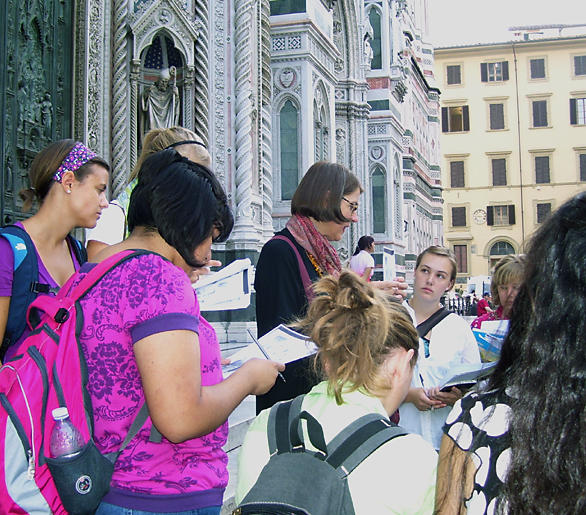 Gail Solberg (center) teaching a class on-site in Florence.
Gail Solberg (center) teaching a class on-site in Florence.
Photo by Carol Dickerman
Julia was a seventh grader at the time and attended an Italian school. Whenever she could, though, she tagged along with the college students, and soaked it all in as program instructors/ art historians Janet Smith and Gail Solberg led field trips around Florence and other Italian cities.
“I just remember that time so fondly,” Sienkewicz said. “I do trace my love of art history to following Gail and Janet around. They were so generous to let us do that. I still have really close friends from school there, and I go back to visit every now and then.”
Sienkewicz has been conducting research and writing about Greenough and Cole over the past five or six years, first as a graduate student and now as she reworks material from her dissertation into a book to be titled Material Impressions: Exploring the Social Foundations of Art in the Early American Republic.
A graduate of Mt. Holyoke College, Sienkewicz received her Ph.D. from the University of Illinois in 2009. She spent last year at the Smithsonian American Art Museum on a post-doctoral fellowship. “The post-doctoral fellowships really are intended to be dissertation revision and research,” she said, “so during that year I did a lot of review and new digging into archival materials.”
She is traveling to Florence on a research trip funded by the New Faculty Grant-in-Aid program funded by the Office of Sponsored Programs at Auburn University Montgomery. The opportunity to squeeze in a quick visit with family and to deliver a lecture – at the Cecil Studios, no less – is a bonus.
“That’s actually very exciting for me,” said Sienkewicz. “Bartolini’s studio was where Greenough studied. So for me, that will be very special to talk about him there.”
Links:






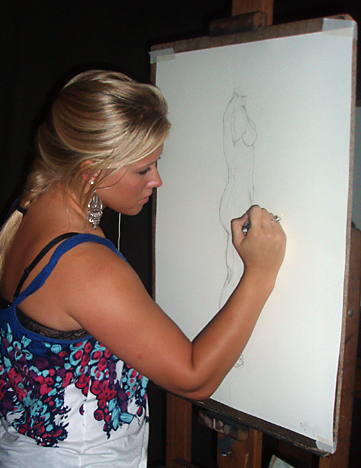 Mackenzie Lang drawing in the Charles H. Cecil Studios.
Mackenzie Lang drawing in the Charles H. Cecil Studios.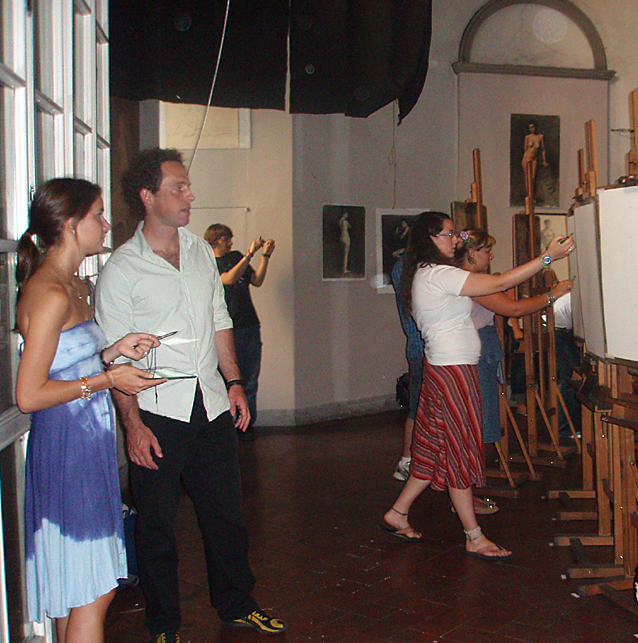 Students in the Florence Program’s studio art class.
Students in the Florence Program’s studio art class.